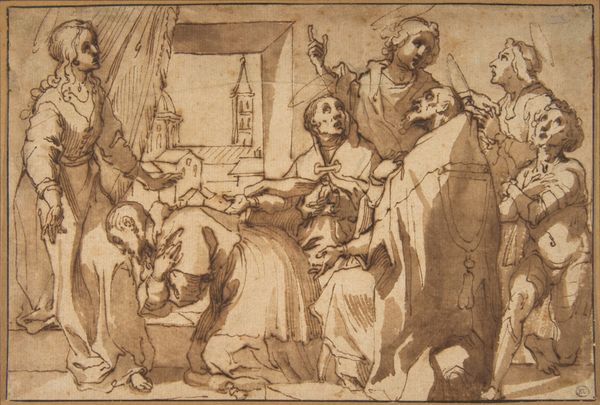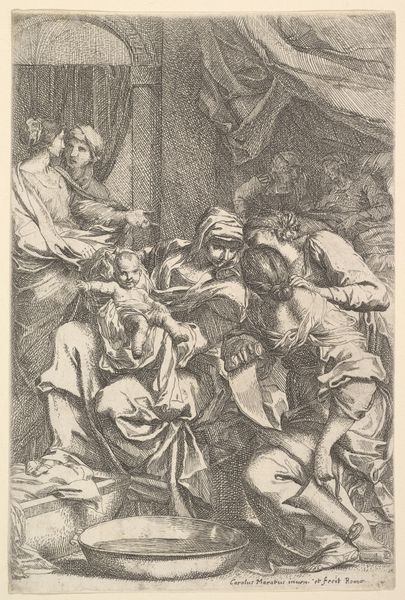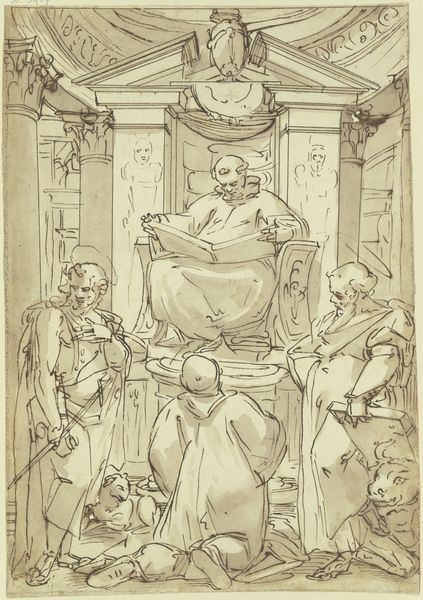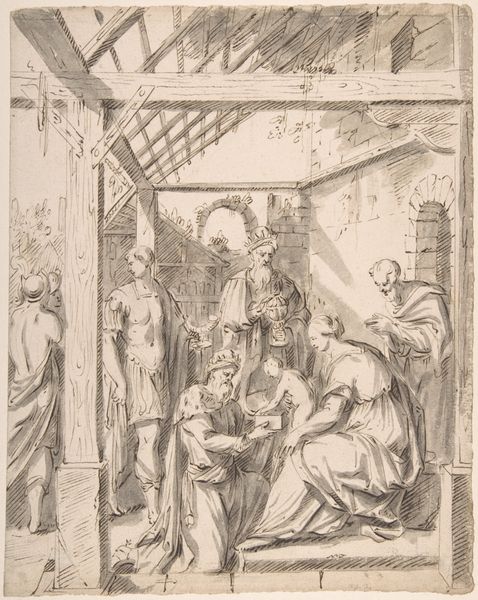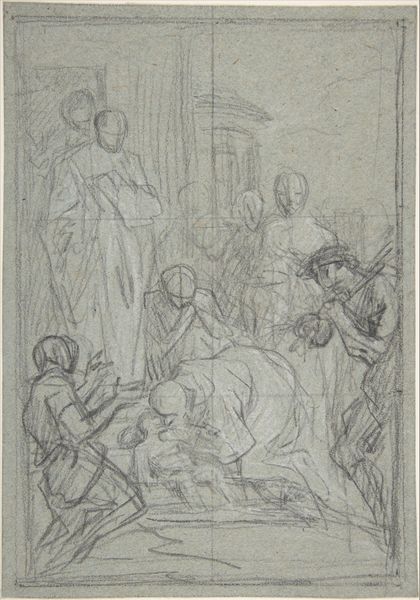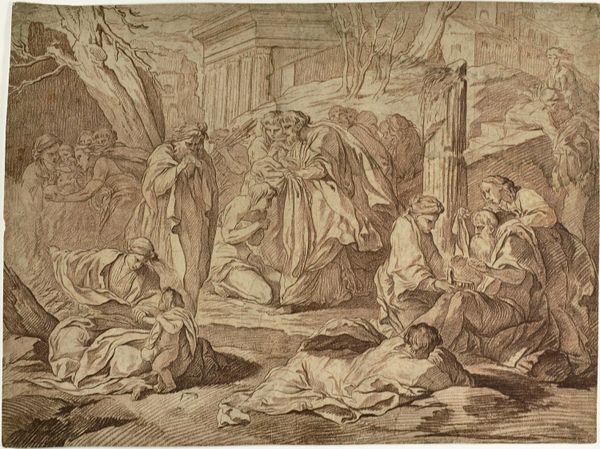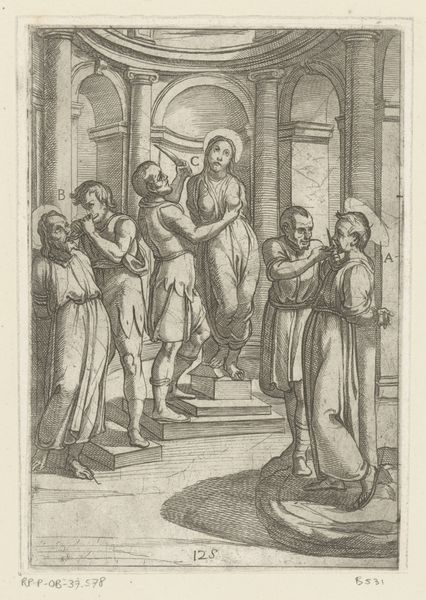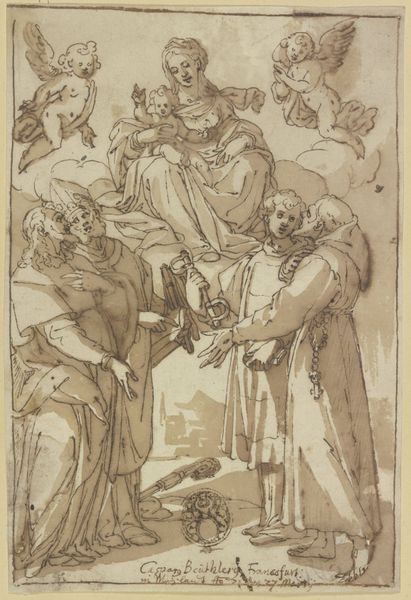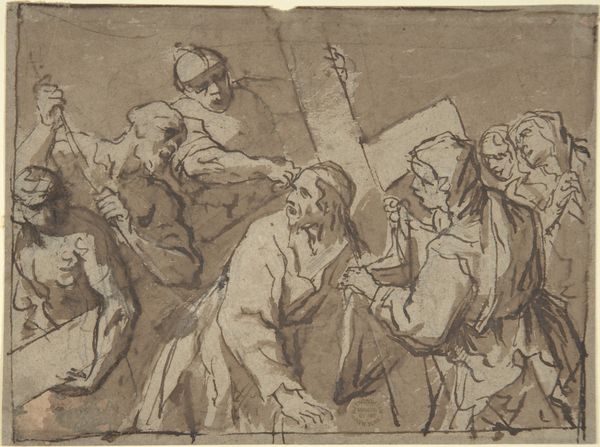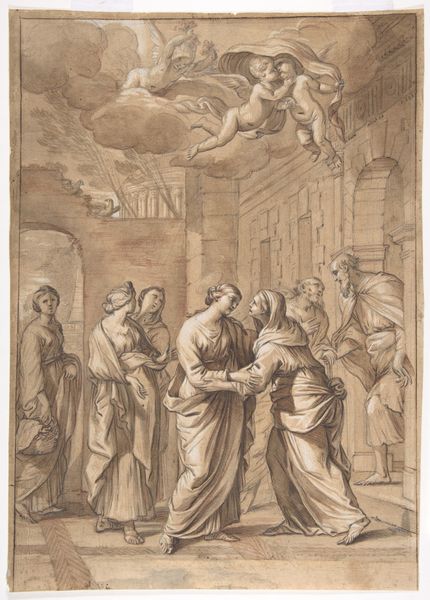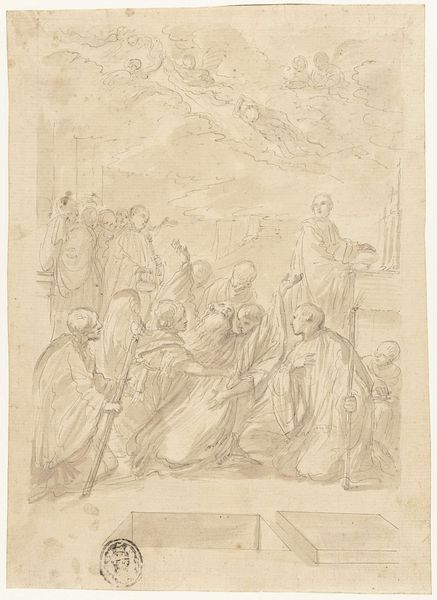
Viele Figuren vor einer Säulenhalle um einen Sterbenden versammelt
0:00
0:00
drawing, paper, ink
#
drawing
#
baroque
#
figuration
#
paper
#
ink
#
genre-painting
#
history-painting
Copyright: Public Domain
Editor: Here we have "Viele Figuren vor einer Säulenhalle um einen Sterbenden versammelt," which roughly translates to "Many figures gathered around a dying man in front of a columned hall," by Giuseppe Maria Crespi. It's a drawing in ink on paper, currently residing in the Städel Museum. The scene is undeniably dramatic, and there seems to be quite a bit of activity despite the gravity of the situation. What stands out to you most in this piece? Curator: What strikes me is the interplay between the apparent subject, death, and its performative aspects. In baroque art, even death has an audience, it seems. This drawing, though seemingly a preparatory sketch, provides insights into how social dynamics were visualized in Crespi’s time. Think about the institution of art itself: What stories did it deem worthy of representation, and how did patronage influence that? Editor: That's interesting – so it's not just about the individual dying, but about the societal performance surrounding death? Curator: Precisely. The baroque era thrived on spectacle. This drawing begs us to consider who commissioned such images and why. The positioning of figures, their gestures, and even the architectural setting serve to amplify not only the dying man's plight, but also the emotions and responses of those around him. The elite often commissioned these scenes to reflect upon their own mortality within a controlled narrative. Notice the dramatic gesture of the figure pointing – are they accusing someone, or simply lamenting? Editor: I hadn’t considered that aspect. So, Crespi is not simply capturing a moment of death, but offering a commentary on the theater of grief and social status in that era? Curator: Yes, the value of such artwork lies in understanding the societal and political forces at play, dictating which narratives gained prominence, and were showcased to the public, influencing behavior and even beliefs about death itself. Editor: This piece makes so much more sense now. I was so focused on the surface narrative of death and grief I missed its political and societal underpinnings. Thank you for providing a broader historical perspective. Curator: Indeed. Understanding the historical forces helps to decipher the underlying meanings within these works.
Comments
No comments
Be the first to comment and join the conversation on the ultimate creative platform.
